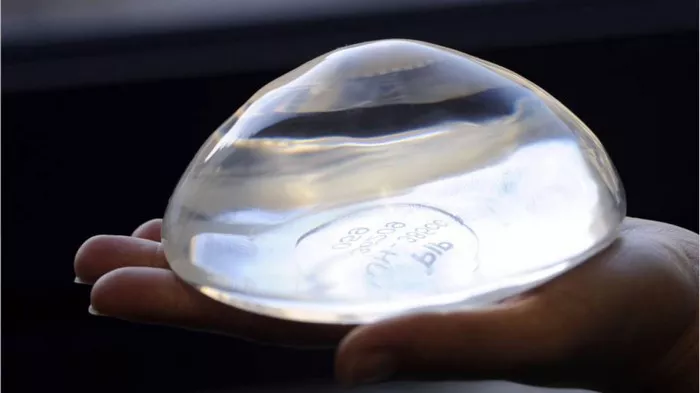Breast augmentation is a popular surgical procedure that involves the placement of breast implants to enhance the size, shape, and symmetry of the breasts. As with any medical device, it is natural to wonder about the lifespan of breast implants and how long they will last. In this article, we will explore the life expectancy of breast implants, factors that can influence their durability, and when to consider replacement.
Understanding Breast Implants
Breast implants are silicone or saline-filled devices that are surgically implanted to enhance the appearance of the breasts. They are designed to withstand the stresses and strains of everyday activities and provide long-lasting results. While breast implants are durable, they are not considered to be lifetime devices and may require replacement or removal at some point.
Life Expectancy of Breast Implants
The life expectancy of breast implants can vary depending on several factors, including the type of implant, individual factors, and the absence of complications. On average, breast implants are designed to last for 10 to 20 years. However, it is important to note that this is an estimate and not a guarantee. Some implants may last longer, while others may require replacement sooner.
Factors Influencing Longevity
Implant Type
The type of implant can influence its lifespan. Silicone gel-filled implants and saline-filled implants are the two main types used in breast augmentation. Silicone implants are known for their durability and cohesive gel consistency, which helps prevent leakage or deflation. Saline implants are filled with a sterile saltwater solution and are generally less prone to rupture or leakage. However, individual experiences may vary, and it is important to discuss the pros and cons of each implant type with your plastic surgeon.
Individual Factors
Individual factors, such as age, genetics, lifestyle, and overall health, can affect the longevity of breast implants. Some individuals may experience changes in breast tissue, skin elasticity, or natural aging processes that can impact the appearance or integrity of the implants over time. Additionally, pregnancy, breastfeeding, and significant weight fluctuations can also affect the long-term durability of breast implants.
Complications
Complications such as capsular contracture, implant rupture, or implant malposition can occur and may necessitate implant removal or replacement. Capsular contracture is the formation of excessive scar tissue around the implant, leading to discomfort, distortion, or hardening of the breasts. Implant rupture, although rare, can occur due to trauma, implant failure, or normal wear and tear. Any complications should be promptly addressed with your plastic surgeon to ensure appropriate management.
Quality of Implants and Surgical Technique
The quality of the implants used and the expertise of the plastic surgeon performing the procedure can also influence the lifespan of breast implants. It is essential to choose a board-certified plastic surgeon who has experience in breast augmentation surgeries and uses implants from reputable manufacturers. Adhering to proper surgical techniques, such as precise pocket creation, careful implant handling, and appropriate incision placement, can contribute to the long-term success of the procedure.
When to Consider Implant Replacement
While breast implants are not designed to last a lifetime, it is important to understand when to consider implant replacement. The decision to replace breast implants should be based on medical considerations, personal preference, and the advice of your plastic surgeon. Some common reasons for considering implant replacement include:
Rupture or Leakage
If a rupture or leakage is detected in a saline-filled implant, it will be noticeable as the implant deflates. However, silicone gel-filled implants may require imaging, such as an MRI, to detect rupture. In the case of implant rupture or leakage, replacement or removal may be necessary.
Capsular Contracture
Capsular contracture can cause discomfort, aesthetic changes, or functional limitations. If capsular contracture occurs and affects your quality of life, revision surgery may be recommended to address the issue.
Desire for Size or Shape Changes
Over time, your aesthetic preferences may change, and you may desire a different breast size or shape. In such cases, implant replacement or revision surgery can help achieve your desired results.
Implant Aging and Concerns
As breast implants age, they may show signs of wear, such as rippling, changes in shape, or loss of volume. If these concerns arise and affect your satisfaction with the results, replacement or revision surgery can be considered.
It is important to consult with your plastic surgeon regularly to monitor the condition of your breast implants and discuss any concerns or potential complications. Your surgeon will evaluate the integrity of the implants, assess your overall breast health, and provide guidance on when replacement or revision may be appropriate.
Conclusion
While breast implants are designed to be durable, they are not considered lifetime devices. The life expectancy of breast implants can range from 10 to 20 years, but individual experiences may vary. Factors such as the implant type, individual factors, complications, and the quality of the implants and surgical technique can influence their longevity. It is important to consult with a board-certified plastic surgeon who can provide personalized guidance based on your unique circumstances. Regular follow-up appointments and ongoing monitoring of the implants are crucial to ensure their optimal function and address any concerns that may arise. By understanding the factors that impact the life expectancy of breast implants and staying informed about their condition, you can make informed decisions about replacement or revision surgery to maintain your desired breast aesthetics and overall satisfaction.

